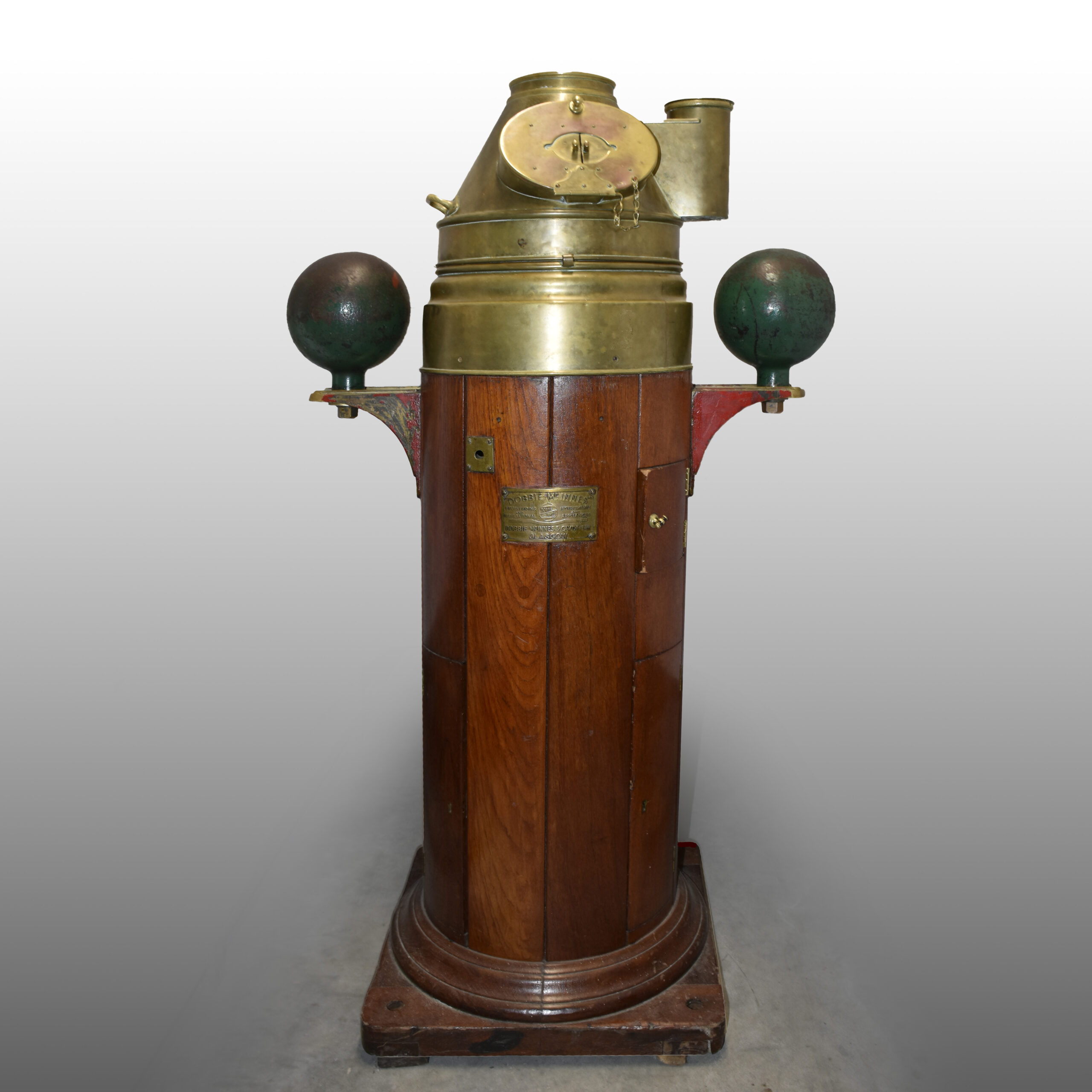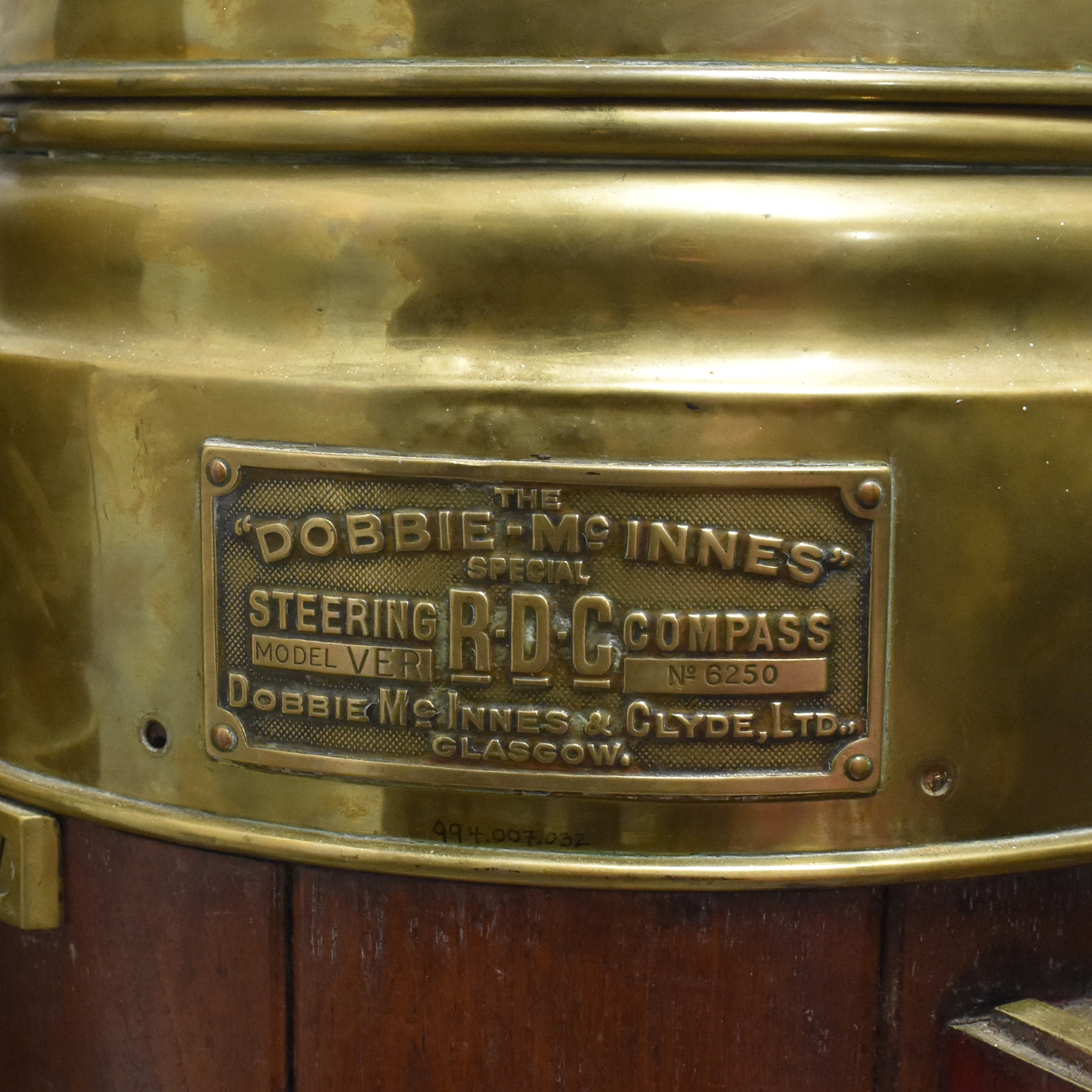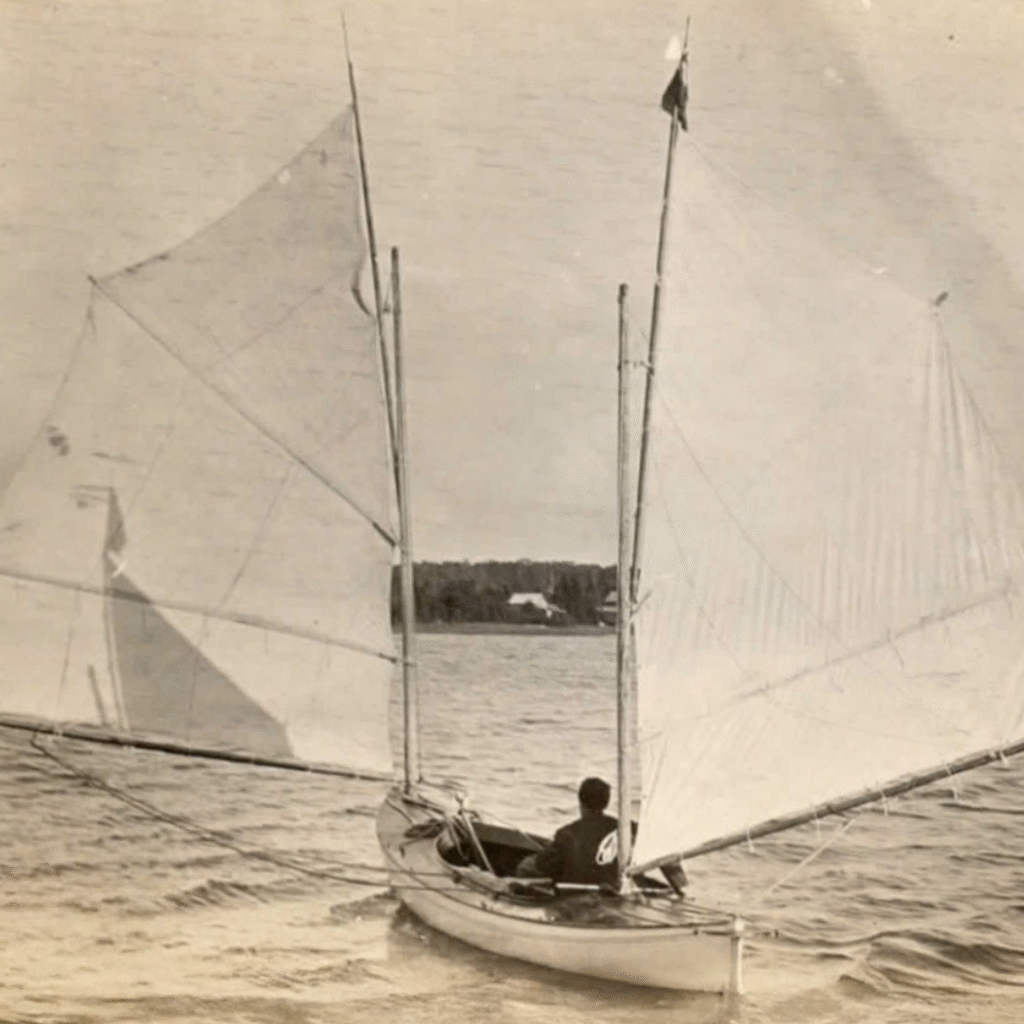Standing over 4 feet tall, with a patinaed brass head, fluted wooden body, and two iron balls sticking out either side, this 100-year-old binnacle cuts a striking figure amidst the marine artifacts in the Museum’s collection.
Binnacle Basics
But wait – what is a binnacle? Not one of those clingy crustaceans that sticks to everything… No, a binnacle is a case for navigational instruments used by a ship’s helmsman.
Binnacles have been used on marine vessels for centuries. Traditionally, their primary purpose is to house the ship’s compass, mounted on gimbals to keep it level. Most binnacles would have also contained an oil lamp, a sand timer, and other instruments for calculating a vessel’s speed and trajectory. Over the last two-hundred years, however, binnacles have taken on many more complicated functions. They are still an integral part of a ship’s navigational toolkit, and large vessels may even have up to four of them.
Fun Fact: The word binnacle stems from the middle part of the Latin word habitaculum, meaning “little dwelling” – and, in a way, that’s exactly what binnacles are: a little house for compass and friends.
Magnetic Mix-up
In 1801, British naval officer Matthew Flinders observed a correlation between deviations in his compass readings, changes to his ship’s latitude, and his cargo of iron cannonballs. The ferrous materials aboard the boat were interacting with the Earth’s magnetic field, causing the compass to deviate. He discovered that a vertical iron rod placed on the fore or aft side of the compass could help mitigate the effects of this interference. Now known as a “Flinders Bar”, one of these rods would be housed in the vertical brass tube on the foreside of the binnacle here.
During early- to mid-1800s, as more ships were built with iron hulls, navigators aboard these vessels began to observe more severe and frequent compass deviations. In response, mariners, inventors, and academics developed a variety of clever methods and devices to compensate for these deviations. Some notable contributors include: mathematician George Biddell Airy; seafaring explorer William Scoresby; nautical optician John Gray; and astronomer Janet Taylor.
Goodness Gracious, Great Balls of Iron
The standing binnacle here owes its distinctive, cactus-like silhouette to the addition of the two compensating spheres (AKA quadrantal correctors or “Klevin’s Balls”). Eighty years after Captain Flinders deduced that the irons balls in his cargo were contributing to his compass deviations, one very astute Scotsman discovered a way to use iron balls to correct compass deviations.
In the 1880s, renowned engineer, mathematician, and physicist William Thomson found that placing iron spheres on the starboard and port sides of the binnacle significantly reduced compass errors. William Thomson later became known as Lord Kelvin, after his knighthood in 1892, which is why these spheres are called “Kelvin’s Balls”.
The body of this binnacle also has various compartments for housing other compass correctors, such as “heeling error magnets”, which help compensate for errors caused by the angle of heel (temporary lean or tilt of a vessel due to wind, waves, or sharp turns). These would be held in bucket suspended directly below the compass, which could be raised and lowered with a chain. Other compass correctors such as “fore & aft magnets” and “athwartship magnets” would be placed through round holes located in the port and starboard side compartments.
One Very Cool Compass for the Collection
This “Dobbie-McInnes Special Steering R-D-C Compass” was manufactured by Dobbie McInnes & Clyde Ltd. in Glasgow, Scotland. It was produced sometime between 1921 and 1937, during Walter Clyde’s tenure as Managing Director of the company. It belonged to the late Captain Harold Miller (1908-1992) of Wiarton, ON. Captain Miller spent 48 years as a sailor on the Great Lakes, retiring from Canada Steamship Lines at the rank of Commodore in 1972.
Sources
- Artifact record: Dobbie-McInnes Special Steering R-D-C Compass, BCM&CC Collection 994.007.032
- Bhattacharjee, Shilavadra, “What is a Binnacle on Ships?”. Article for Marine Insight, published Jan 3, 2021: https://www.marineinsight.com/marine-navigation/what-is-a-binnacle-on-ships/
- Blogging Sailor[anonymous], “Magnetic compass parts & correctors”. Webpage published March 8, 2022: https://www.bloggingsailor.com/magnetic-compass-parts-and-correctors/
- Burns-Balogh, Pamela, A History of Binnacles, 2011. Book excerpts: http://www.balogh.com/binnacleflyerad.pdf
- Croucher, R. F., & Croucher, J. S., “Compasses and sinking ships: Mrs Janet Taylor’s contribution in the compass adjusting controversy of mid-nineteenth-century England.” In International Journal of Maritime History, 30(2), May 2018: https://doi.org/10.1177/0843871418760470
- Flinders, Mathew, “On Certain Differences of the Magnetic Needle”. In Philosophical Transactions of the Royal Society or London, 95(1), Dec 1805: https://doi.org/10.1098/rstl.1805.0012
- Grace’s Guide To British Industrial History, “Dobbie McInnes”. Webpage accessed June 30, 2025: https://www.gracesguide.co.uk/Dobbie_McInnes
- Sharlin, Harold, “William Thomson, Baron Kelvin”. Article for Britannica, last updated June 22, 2025: https://www.britannica.com/biography/William-Thomson-Baron-Kelvin
- WikiTree, “Family tree of Walter Provan Clyde”. Webpage accessed June 30, 2025: https://www.wikitree.com/wiki/Clyde-362
Further Reading: National Geospatial-Intelligence Agency, Handbook of Magnetic Compass Adjustment, 2004: https://msi.nga.mil/api/publications/download?key=16920950/SFH00000/HoMCA.pdf&type=view





